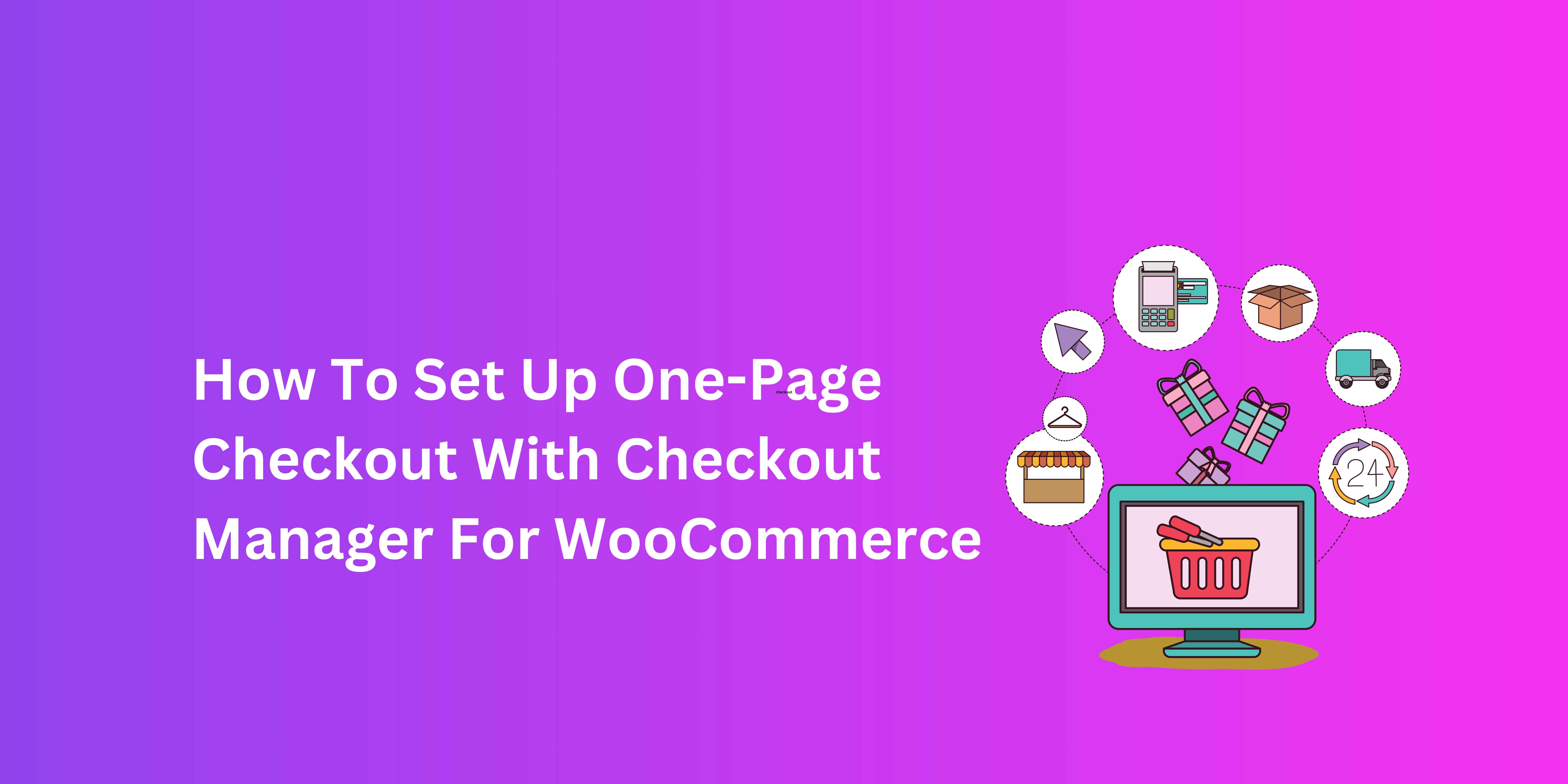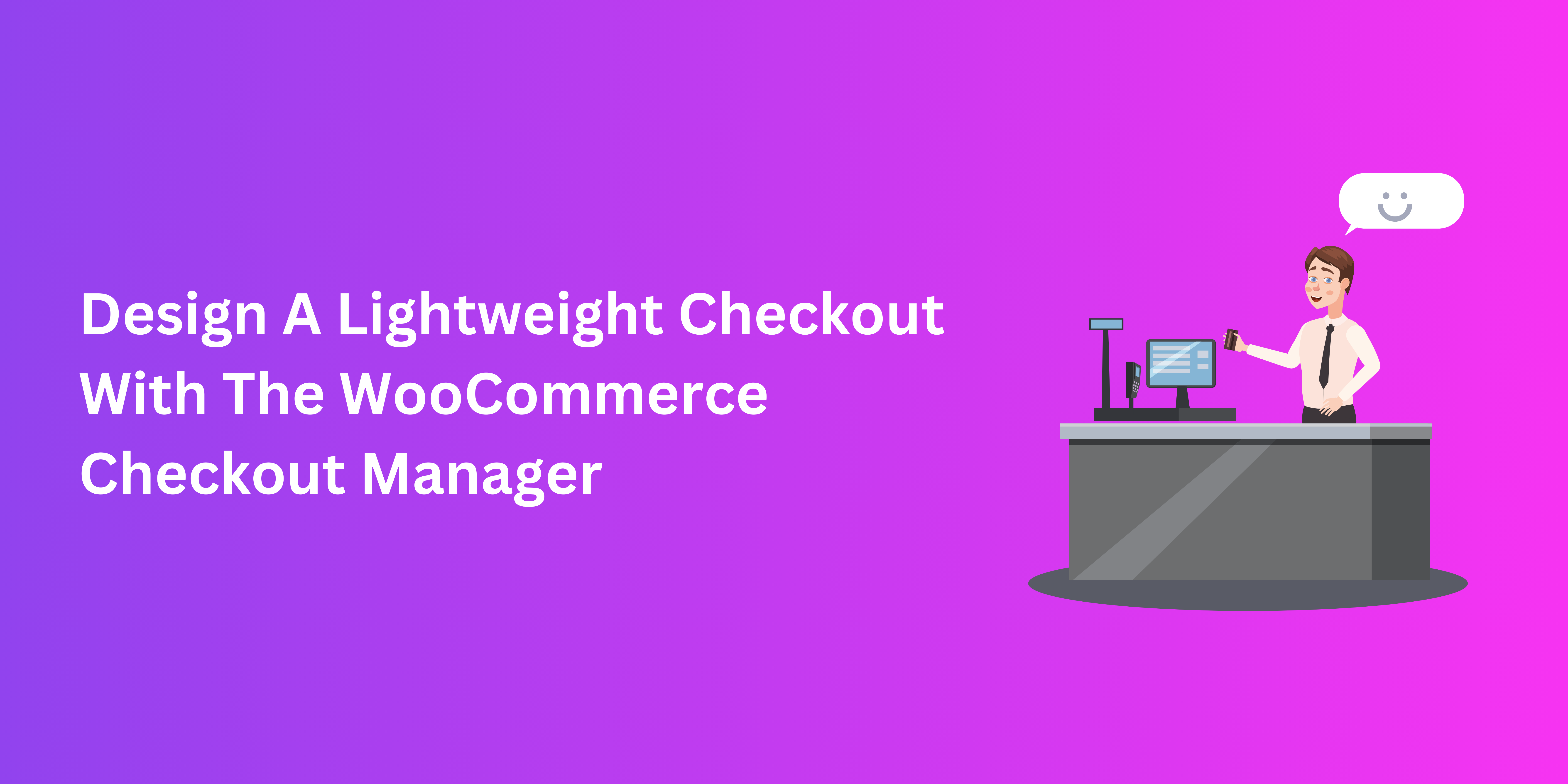Online stores are often at odds when balancing their need for data and facilitating buyers at the same time. On the one hand, you need a quality WooCommerce checkout manager to customise checkout fields and shipping. But then there is the need to shorten the overall process.
If this seems like a tricky tightrope act to you, you’re not alone. Nonetheless, online stores must find ways to make their checkout forms robust while prioritising speed and efficiency. Increasingly, more and more WooCommerce stores show preference for one-page checkout has. If you’re just finding out about it, let’s understand why this approach has such appeal.
Understanding One-Page Checkout
As the name makes it clear, one-page checkout packs the complete checkout flow to a single page. When a customer makes a purchase, one-page checkout lets them select goods, enter their data, confirm shipping, and finalize the payment on that same page. No multiple steps and page after page of filling in details.
Single-page checkout was developed to streamline online shopping. While multi-step checkout is another way to go about designing your checkout page, more and more WooCommerce stores are lining up to take the single-page route.
Why Create A More Condensed Checkout?
Studies repeatedly show that complicated checkout processes lead to fewer completed purchases. The reason is simple. Checkout pages that contain too many steps can be frustrating to buyers. No one wants to navigate a maze of forms and fields.
The more you strive for simplicity in your checkout process, the less frustration your buyers will experience. The easiest way to achieve this is by making the checkout process more brief. This results in a more streamlined flow that consumes less of the buyer’s time.
Three Crucial Advantages Of One-Page Checkout
- Reduced Cart Abandonment
Cart abandonment is a widespread problem in e-commerce, and often occurs due to a poorly optimized checkout page. With single-page checkout, you don’t have to make much effort in customizing the layout.
Instead, you just need the essentials to eliminate hassle from your checkout flow. This leads to easier shopping, which in turn curtails abandoned carts in WooCommerce.
- Improved Conversion Rates
Simplifying purchases makes it easier for buyers to take their time when shopping without losing patience or experiencing too many errors. The result is higher conversions, which boosts traffic and revenue.
- Enhanced User Experience
Proper UX is critical for online businesses. By presenting a thorough checkout all in one place, the one-page approach makes checkout more convenient and rewarding for customers. Plus, with the right checkout field editor for WooCommerce, stores can set up field customization, validation, discount rules, and more!
Common Concerns
In e-commerce, no approach is singularly the best of its kind. And while one-page checkout has its defenders, it’s worth addressing some key complaints that are commonly associated with it. Without that, online stores cannot really benefit from putting all their eggs in one basket, so to speak.
Security Concerns
The reason why one-page checkout works is that many online stores know how to implement it perfectly. But those who don’t would pack in all the sensitive data-collection fields on a single page. This can lead to concerns surrounding the safety of the checkout process.
Poor Design
Another way in which condensed checkout pages can prove less than helpful is by making things confusing. Store owners need to decide which fields are necessary for their checkout forms. But if there are too many of them, going with a one-page checkout page design can backfire.
Strategies For Improving WooCommerce One-Page Checkout
Despite the challenges, there is no need to be put off by the concept of one-page checkout. Instead, you can embrace this approach by optimizing your checkout with the right features. That way, you can simplify checkout whilst being able to gather user data for personalization and maintaining conversions. Let’s take a look.
- Clear and Concise Design
Take a moment to weigh which checkout fields are crucial and which aren’t. Use a quality checkout manager plugin to hide or delete fields. Alternatively, you can use dropdown menus and conditional logic to make the layout more focused and minimalist. (checkout manager)
This ensures the overall checkout flow is labelled, clear, and easy to navigate. For longer pages, a progress indicator helps buyers keep track of their purchase in real-time.
- Mobile Optimization
More and more online customers are switching to mobile phones to make their purchases and bookings. So, make sure that you checkout page follows “mobile-first” design. This ensures that the online register is equally responsive for mobile and Desktop user. This is effective at preventing cart abandonment and maintaining your SEO.
- Methods For Payment
Integrate several payment gateways that your customers can choose from. This flexible checkout design can increase confidence in your business without infringing on the simplicity of a one-page checkout design.
- Safety Checks
Addressing cybersecurity concerns will help your store solve one of the main problems with single-page checkout design. With SSL certification and proper encryption, your buyers have the peace of mind that their personal and financial data is in safe hands.
Conclusion: Checkout manager
Ease of use is paramount in online shopping, and WooCommerce stores are in a constant struggle to design the perfect checkout flow. Luckily, with an eye for strategic design and a quality checkout manager for WooCommerce, one-page checkout can be easy to implement. Before you know it, your online store is the talk of the town.




